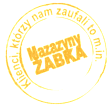Reliability of industrial climbers' tools from IRATA
Working more safely thanks to new solutions
Modern technology is revolutionising the way work is done at height, with innovations that increase the safety and comfort of industrial climbers. These developments make work more efficient but also less risky. Industrial mountaineering requires advanced equipment and solutions that make working at heights safer and more effective. Modern technologies supporting industrial climbers include, for example:
- drones,
- automated rope systems,
- headsets with microphone.
Drones are primarily used for inspection of hard-to-reach areas. Equipped with high-resolution cameras, they enable detailed monitoring of objects, eliminating the need for climbers to directly access dangerous points. Automated rope systems, on the other hand, facilitate stabilisation and movement, reducing physical effort. State-of-the-art communication devices, such as headsets with microphones, allow free contact with the team, which is essential for the smooth running of the work. Such solutions make operations at height safer and more efficient, allowing industrial climbers to focus on their tasks and employers to streamline project organisation.

The most important equipment for an industrial climber
Working at height requires the use of appropriate tools and equipment that offer a high level of safety and efficiency. To this end, the IRATA organisation has developed standards that include, among other things, the use of harnesses and rope belay systems that stabilise climbers, allowing them to move safely around the site. Fall blockers are also essential, minimising the risk of falling by automatically locking in place upon sudden movement. In terms of inspection and repair work, climbers also use advanced tools such as thermal imaging cameras and endoscopes.
Rope techniques for professionals
In the work of IRATA-certified industrial climbers, rope techniques that allow safe movement at heights are important. In the single-point belay technique, the climber is attached to a single point on the rope, allowing freedom of movement, while the two-point technique offers additional security, as the second belay point takes over as protection in case of failure. Prusiking, on the other hand, allows controlled movement on the rope, which is important for tasks that require precision.

Innovations in mountaineering safety
Maintaining safety is an extremely important part of the work of industrial climbers, so modern technologies are being introduced to minimise risk. An example would be fall detection systems that monitor the movement of the climber. If dangerous behaviour is detected, the system automatically triggers an alarm or locks the rope, significantly increasing protection. In addition, mountaineering equipment is designed for harsh weather conditions such as rain or wind. Modern clothing can be waterproof and heat insulating, allowing comfort and safety when working at height. Education and training are also important for industrial climbers. Methods such as interactive online courses and virtual simulations effectively support the acquisition of the necessary knowledge. Practical training on special facilities allows skills to be developed, which contributes to increased productivity and safety when working at height.
Artificial intelligence at work
Automation and artificial intelligence are playing an increasingly important role in industrial mountaineering, introducing innovative solutions to enhance the safety and quality of climbers' work. Automated belay systems, based on AI, track the climber's movements and adjust the tension of the ropes, reducing the risks associated with human error. In addition, data analysis makes it possible to predict conditions and assess potential risks. Robotics is also becoming increasingly important, allowing precise tasks to be carried out in hard-to-reach areas, which in turn reduces the risk of accidents.

Modern technology in industrial mountaineering
Industrial mountaineering is rapidly evolving thanks to new technologies. Today, IRATA-certified mountaineers use drones, modern rope systems and advanced communication devices. Essential tools include harnesses, fall locks and inspection equipment. Rope techniques such as one-point and two-point belaying and prusiking enable safe work. In the area of innovation, fall detection systems and automation stand out to increase productivity when working at height, while artificial intelligence supports data analysis.
Questions and answers
1. What are the different mountaineering techniques?
Mountaineering techniques include one-point and two-point belaying and prusiking. The former involves tying the climber to a single point, allowing free movement. Two-point offers additional safety, as if one point fails, the other still protects against a fall. Prusiking allows the climber to move along the rope using knots.
2. What are the trends in mountaineering equipment?
The trend towards automation and the use of technology is now apparent. Belay systems using artificial intelligence regulate rope tension and monitor the movement of the climber. Drones are increasingly being used for inspection.






























